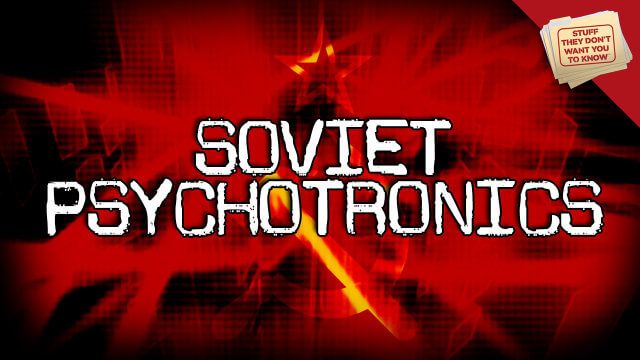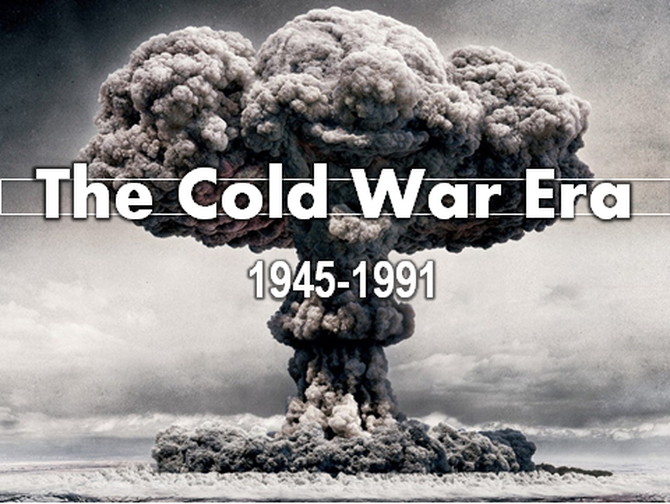Mainstream Media Using UFO Report to Stir Arms Race
Article by Caitlin Johnstone June 4, 2021 (consortiumnews.com)
• The New York Times has published an article on the leaked contents of the still anticipated U.S. government report on UFOs (see here). “The report determines that a vast majority of more than 120 (UFO) incidents over the past two decades did not originate from any American military or other advanced U.S. government technology,” the NY Times was told by the officials. “That determination would appear to eliminate the possibility that Navy pilots who reported seeing unexplained aircraft might have encountered programs the government meant to keep secret.”
• The NY Times also stated definitively that, “Intelligence officials believe at least some of the aerial phenomena could have been experimental technology from a rival power, most likely Russia or China. One senior official briefed on the intelligence said without hesitation that U.S. officials knew it was not American technology. The official said there was worry among intelligence and military officials that China or Russia could be experimenting with hypersonic technology.” Apparently, foreign adversaries have severely lapped American military technological development.
• Of course, the ‘senior government officials’ cited by the NY Times are anonymous, as usual. And of course, the narrative that the NY Times is promoting is convenient for imperialists and war profiteers who want to spur greater defense spending and the development of more intensive weapons to meet the perceived challenges of this new Cold War.
• The NY Times article didn’t hold back on the fear-mongering: “Russia has been investing heavily in hypersonics, believing the technology offers it the ability to evade American missile-defense technology. China has also developed hypersonic weaponry, and included it in military parades. If the phenomena were Chinese or Russian aircraft, officials said, that would suggest the two powers’ hypersonic research had far outpaced American military development.”
• This won’t be the last time we hear the imperial media warning us that UFOs may be a sign of a frightening gap in technology leaving the U.S. defenseless against far more powerful foreign foes. Tucker Carlson has been pushing this narrative for weeks now, demanding that the U.S. government do more to address the fact that “our military was completely outmatched technologically by whatever these (UFOs) were.” “UFOs, it turns out, are real,” said Carlson, “and whatever else they are, they’re a prima facie challenge to the United States military. They’re doing things the U.S. military does not allow, and they’re doing it with impunity.”
• Carlson had on his Fox News show military intelligence veteran Luis Elizondo, who claimed that the Senate UFO report will reveal “an intelligence failure on the part of the U.S. intel community on the level of 9/11.” “If there’s a foreign adversary that can put a nuclear warhead within moments over Washington, D.C., OK, that’s a problem,” Elizondo told Carlson.
• Will we now begin seeing this ‘arms race’ angle become the dominant aspect of this UFO story? It would certainly fit the pattern of the U.S. war machine and mass media promoting completely unverifiable allegations about foreign governments to justify further cold war escalations.
• In the early sixties, President John F. Kennedy falsely promoted the “missile gap” narrative, telling the public that the Soviet Union had surpassed the United States in nuclear weapons when he knew full well the U.S. nuclear arsenal had always far surpassed the U.S.S.R.’s in number, quality and deployment. But Kennedy used this hawkish narrative to win an election and advance the largest peacetime expansion of U.S. military power ever, leading directly to the events which gave rise to the Cuban Missile Crisis which came far closer to ending our world than most of us like to think about.
• This new Cold War that the U.S. is waging against Russia and China is insane. There is no valid reason our planet’s dominant powers cannot at the very least cease brandishing Armageddon weapons at each other and begin collaborating toward a better world. Reject the propagandists and Cold Warriors, no matter how elaborate or bizarre their manipulations become.
• [Editor’s Note] You can see the deep state’s fingerprints all over this NY Times article – and the Cold War fever it promotes. Now that the white hat military Alliance is effectively cleaning out the entrenched deep state scourge, the deep state is desperate for some sort of existential threat or false flag that will distract the public from the war between good vs evil that is currently raging behind the scenes. The evil deep state is trying very hard to make one last ditch effort to manufacture a threat of some sort (ie: nuclear war, famine, pandemic, alien invasion) that will allow them to step in and save us all, to reinforce their political control.
Of course the ‘Tic Tacs’ and ‘drones’ that the military is seeing come from the American military industrial complex using advanced extraterrestrial technology gleaned since the 1950s and recently patented by the US Navy. The deep state just want to turn it around and use it for their own ends, as they have been doing for the past seventy years. This type of deception is the ‘front line’ of the information war that being waged right now.
 The New York Times has published an article on the contents of the hotly anticipated
The New York Times has published an article on the contents of the hotly anticipated

U.S. government report on UFOs, as per usual based on statements of anonymous officials, and as per usual promoting narratives that are convenient for imperialists and war profiteers.
Together with one voice, the anonymous U.S. officials and the “paper of record” — which is supposed to scrutinize U.S. officials — assure us definitively that the mysterious aerial phenomena that have reportedly been witnessed by military personnel are certainly not any kind of secret U.S. technology, but could totally be aliens and could definitely be a sign that the Russians or Chinese have severely lapped America’s lagging military development.

“The report determines that a vast majority of more than 120 incidents over the past

two decades did not originate from any American military or other advanced U.S. government technology,” NYT was reportedly told by the officials. “That determination would appear to eliminate the possibility that Navy pilots who reported seeing unexplained aircraft might have encountered programs the government meant to keep secret.

Oh well if the U.S. government has ruled out secret U.S. government weaponry programs, hot damn that’s good enough for me. Great journalism you guys.
One senior official said without hesitation that U.S. officials knew it was not American

technology.
He said there was worry among intelligence and military officials that China or Russia could be experimenting with hypersonic technology https://t.co/bgYtohKC9O
— Jonathan Lemire (@JonLemire) June 4, 2021

“Intelligence officials believe at least some of the aerial phenomena could have been experimental technology from a rival power, most likely Russia or China,” the Times reports. “One senior official briefed on the intelligence said without hesitation that U.S. officials knew it was not American technology. He said there was worry among intelligence and military officials that China or Russia could be

experimenting with hypersonic technology.”
“Russia has been investing heavily in hypersonics, believing the technology offers it the ability to evade American missile-defense technology,” NYT adds. “China has also developed hypersonic weaponry, and included it in military parades. If the phenomena were Chinese or Russian aircraft, officials said, that would suggest the two powers’ hypersonic research had far outpaced American military development.”
The article goes on to describe how the U.S. military have been “unsettled” by aircraft moving and behaving in ways known technologies cannot explain. The implication of scary foreign adversaries having “outpaced American military development” to such an extent is of course that the U.S. military is going to require a far bigger budget with far more intensive weapons development.
This would be the same New York Times that has consistently supported all of the U.S. military’s devastating acts of mass murder around the world, by the way.
FAIR USE NOTICE: This page contains copyrighted material the use of which has not been specifically authorized by the copyright owner. ExoNews.org distributes this material for the purpose of news reporting, educational research, comment and criticism, constituting Fair Use under 17 U.S.C § 107. Please contact the Editor at ExoNews with any copyright issue.

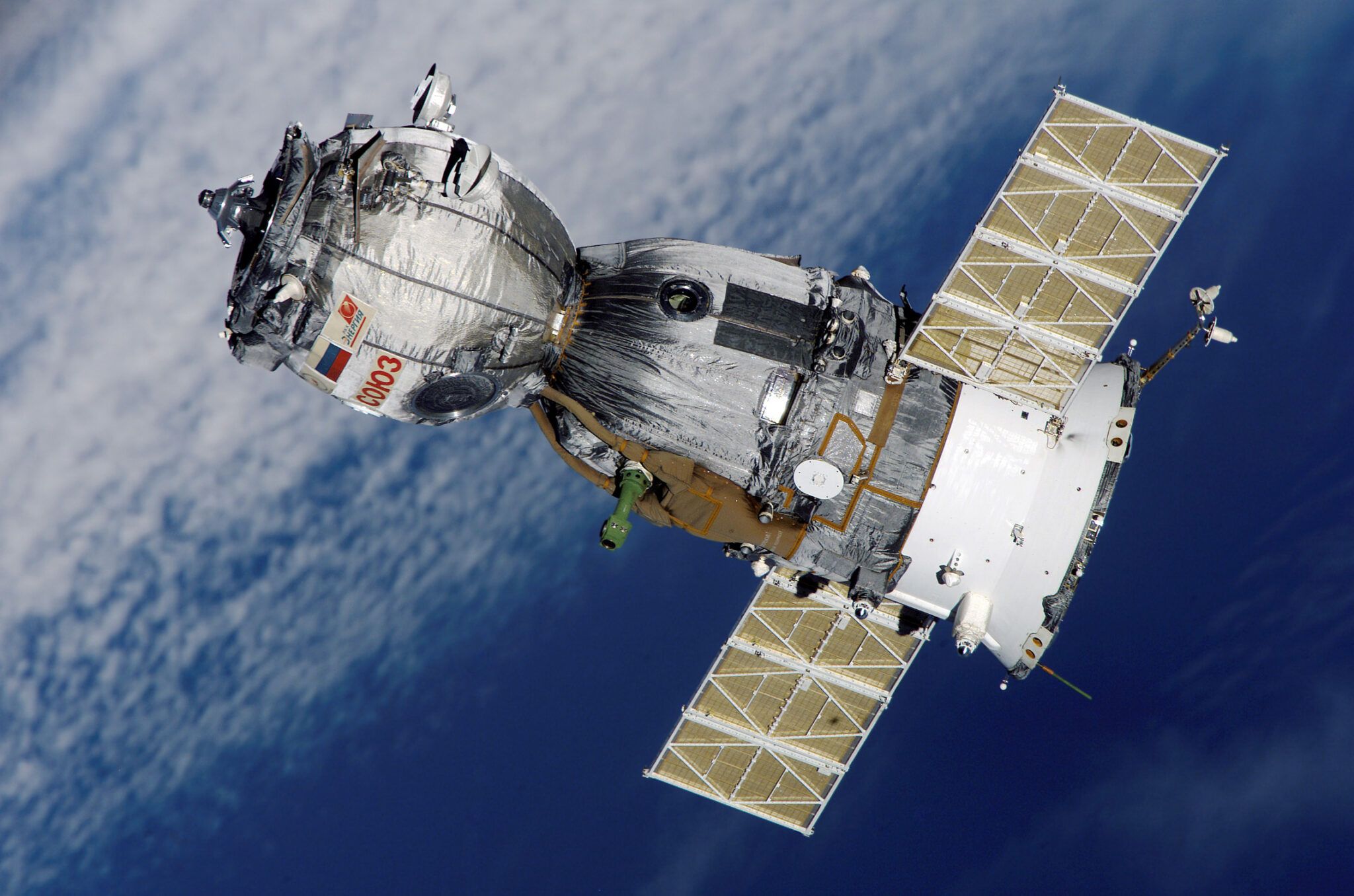
 Sixty years after the Soviet Union made history by launching Yuri Gagarin into space
Sixty years after the Soviet Union made history by launching Yuri Gagarin into space










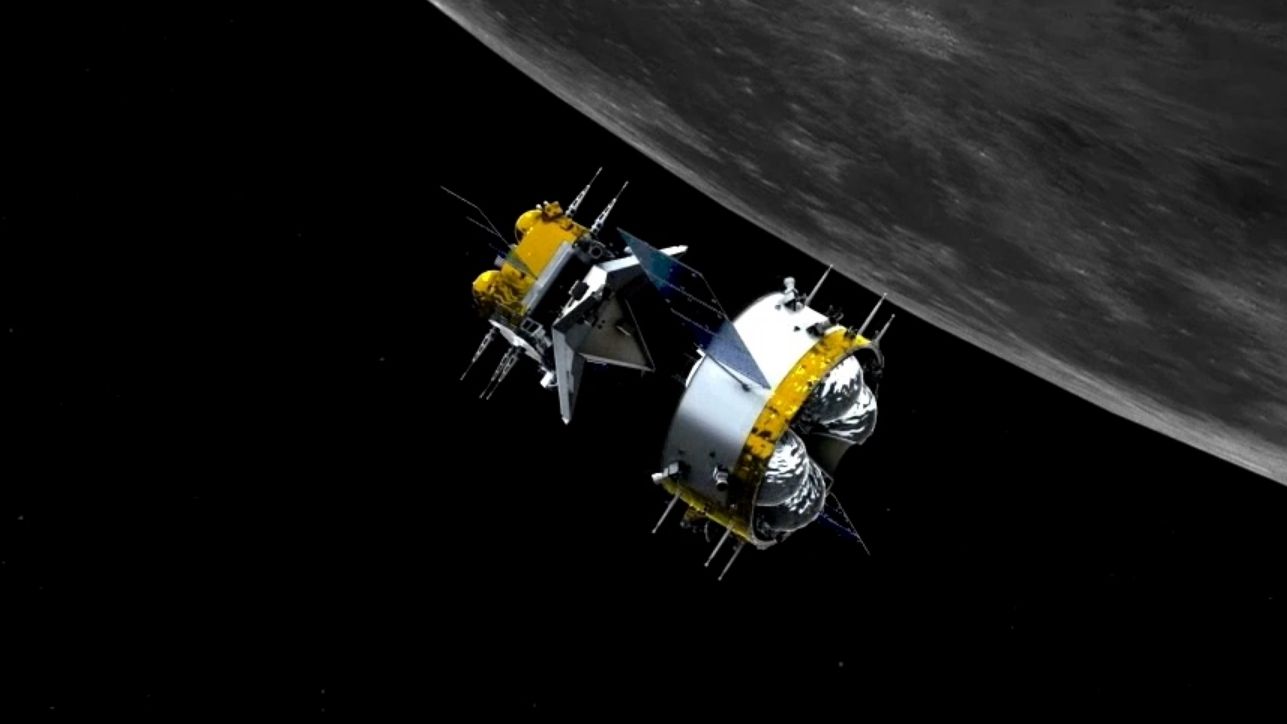


 Russia confirmed the report of sightings of three aliens in the city of Voronezh arriving on the “banana-shaped” object (UFO) on October 9, 1989, 31 years ago.
Russia confirmed the report of sightings of three aliens in the city of Voronezh arriving on the “banana-shaped” object (UFO) on October 9, 1989, 31 years ago.
 According to a TIME report from the October 23, 1989 issue, a strange encounter between a milkmaid and a
According to a TIME report from the October 23, 1989 issue, a strange encounter between a milkmaid and a  “cosmic creature” was reported to have happened in the Russian region of Perm, close to the Ural mountains. Soviet newspaper Komsomolskaya Pravda claimed that the Russian researchers registered the “influence of energies” after a geologist made claims of the discovery of the flying saucer in the region. When enquired, TASS and several other Soviet news outlets stood by the existence of aliens’ claims in the Voronezh UFO incident of 1989.
“cosmic creature” was reported to have happened in the Russian region of Perm, close to the Ural mountains. Soviet newspaper Komsomolskaya Pravda claimed that the Russian researchers registered the “influence of energies” after a geologist made claims of the discovery of the flying saucer in the region. When enquired, TASS and several other Soviet news outlets stood by the existence of aliens’ claims in the Voronezh UFO incident of 1989. Genrikh Silanov, head of the Voronezh Geophysical Laboratory, was reported by Tass as saying that
Genrikh Silanov, head of the Voronezh Geophysical Laboratory, was reported by Tass as saying that  Russians scientists found a 20-yard depression with four deep dents at the site, suspecting that it was intact a UFO, adding, two abnormal rocks sent scientists in a jiffy. “At first glance, they looked like sandstone of a deep-red color. However, mineralogical analysis has shown that the substance cannot be found on Earth,” AP cited Silanov’s statement in the TASS report. “However, additional tests are needed to reach a more definite conclusion,” he added.
Russians scientists found a 20-yard depression with four deep dents at the site, suspecting that it was intact a UFO, adding, two abnormal rocks sent scientists in a jiffy. “At first glance, they looked like sandstone of a deep-red color. However, mineralogical analysis has shown that the substance cannot be found on Earth,” AP cited Silanov’s statement in the TASS report. “However, additional tests are needed to reach a more definite conclusion,” he added.







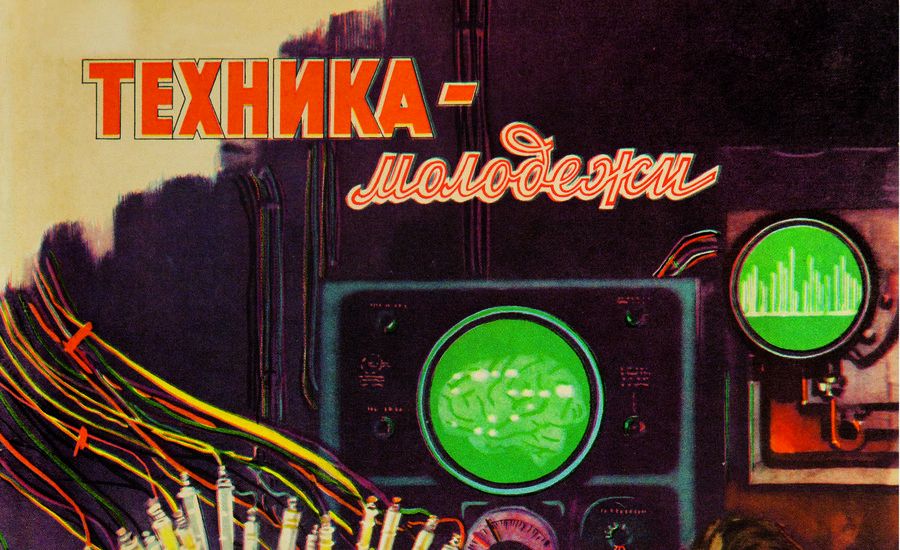

 towers. Straight lines connect the structures to each other, like streets on a map or the projected moves in a game of cosmic chess. The Earth floats serenely in the dark sky, next to the logo that reads Tekhnika—molodezhi, Russian for Technology for the Youth, a Soviet popular science magazine that launched in 1933. The magazine cover, from 1969, illustrated an article highlighting photographs from Luna 9, the Soviet unmanned spacecraft that was the first to survive a landing on the Moon a few years earlier.
towers. Straight lines connect the structures to each other, like streets on a map or the projected moves in a game of cosmic chess. The Earth floats serenely in the dark sky, next to the logo that reads Tekhnika—molodezhi, Russian for Technology for the Youth, a Soviet popular science magazine that launched in 1933. The magazine cover, from 1969, illustrated an article highlighting photographs from Luna 9, the Soviet unmanned spacecraft that was the first to survive a landing on the Moon a few years earlier. from the upcoming, visually delightful book, Soviet Space Graphics: Cosmic Visions from the USSR, by Alexandra Sankova, director and founder of the Moscow Design Museum, which collaborated on the book with her. Space Age artwork proliferated alongside the Soviet Union’s popular science magazines—there were up to 200 titles at their peak—during the Cold War. From the mid-1950s to the mid-1970s, in particular, the cosmos became a battleground for world
from the upcoming, visually delightful book, Soviet Space Graphics: Cosmic Visions from the USSR, by Alexandra Sankova, director and founder of the Moscow Design Museum, which collaborated on the book with her. Space Age artwork proliferated alongside the Soviet Union’s popular science magazines—there were up to 200 titles at their peak—during the Cold War. From the mid-1950s to the mid-1970s, in particular, the cosmos became a battleground for world  powers jockeying for global dominance. Though the Space Age began with the successful launch of the Soviet Union’s Sputnik 1, it was the United States that, just three years after Luna 9, first put a man on a moonscape like the one on the magazine cover.
powers jockeying for global dominance. Though the Space Age began with the successful launch of the Soviet Union’s Sputnik 1, it was the United States that, just three years after Luna 9, first put a man on a moonscape like the one on the magazine cover. labor (precisely labor!) makes the Soviet science and the Soviet man even more powerful, and brings closer that wonderful future—the communist future to which all humanity will arrive.” Scientists, astronauts, and aircraft engineers were treated like legends, since outer space was such an important idea in the Soviet Union, according to Sankova. “Achievements of the USSR in the field of space have become a powerful weapon of propaganda,” she says. Soviet citizens lived vicariously through such images, and even the more surreal and fantastical visuals—living in space, meeting new life forms—demonstrated that the idea of cultural revolution need not be limited to Earth.
labor (precisely labor!) makes the Soviet science and the Soviet man even more powerful, and brings closer that wonderful future—the communist future to which all humanity will arrive.” Scientists, astronauts, and aircraft engineers were treated like legends, since outer space was such an important idea in the Soviet Union, according to Sankova. “Achievements of the USSR in the field of space have become a powerful weapon of propaganda,” she says. Soviet citizens lived vicariously through such images, and even the more surreal and fantastical visuals—living in space, meeting new life forms—demonstrated that the idea of cultural revolution need not be limited to Earth. technical sphere and the serious enthusiasm of designers and artists for new discoveries in various fields of science as a whole. Artists often had technical education. Another important factor that influenced the visuals was the upsurge of publications, books, novels, and short stories, and the production of science fiction films in the 1920s and the 1950 and 1960s.
technical sphere and the serious enthusiasm of designers and artists for new discoveries in various fields of science as a whole. Artists often had technical education. Another important factor that influenced the visuals was the upsurge of publications, books, novels, and short stories, and the production of science fiction films in the 1920s and the 1950 and 1960s.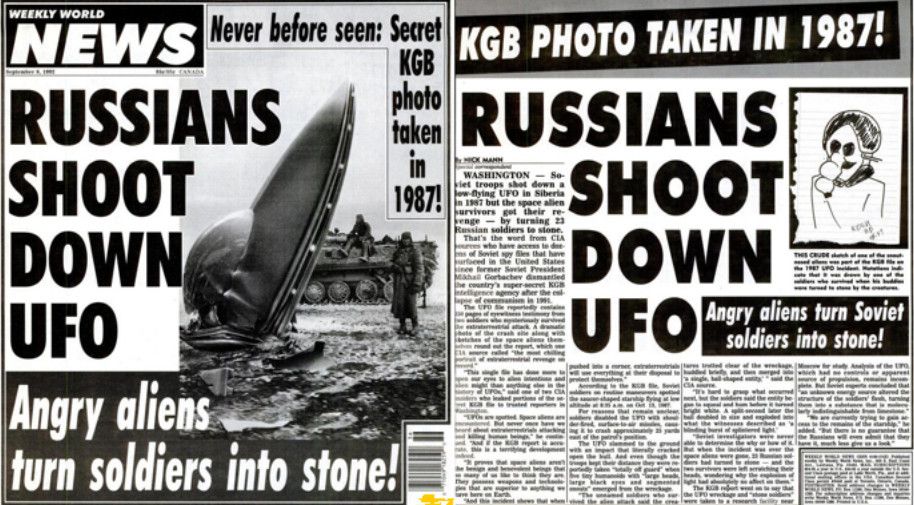
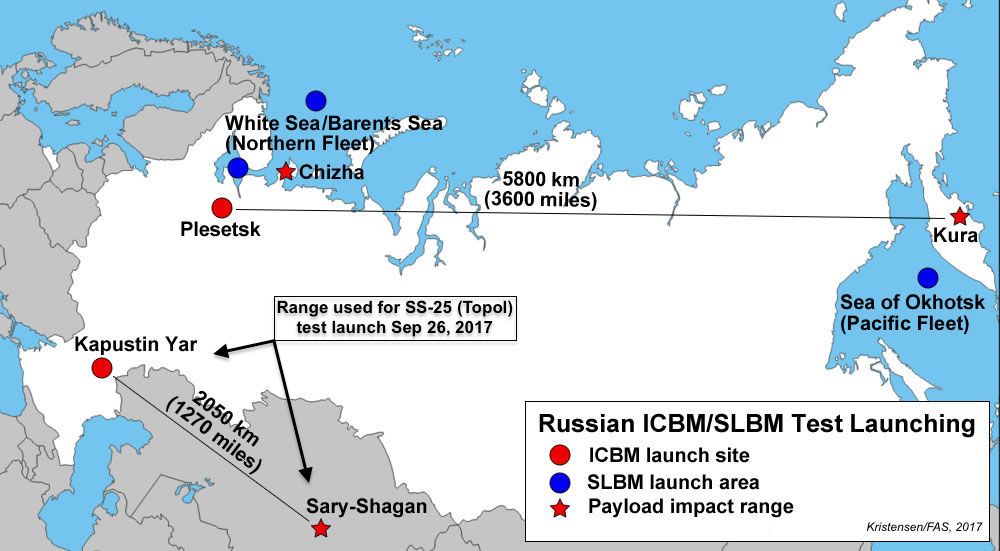

 The UFO encounter took place in the summer, when the sighting’s source “stepped outside for some air,” taking a break from watching a Canada vs. USSR sports match on TV. It was evening, and the source saw above “an unidentified sharp (bright) green circular object or mass in the sky.”
The UFO encounter took place in the summer, when the sighting’s source “stepped outside for some air,” taking a break from watching a Canada vs. USSR sports match on TV. It was evening, and the source saw above “an unidentified sharp (bright) green circular object or mass in the sky.”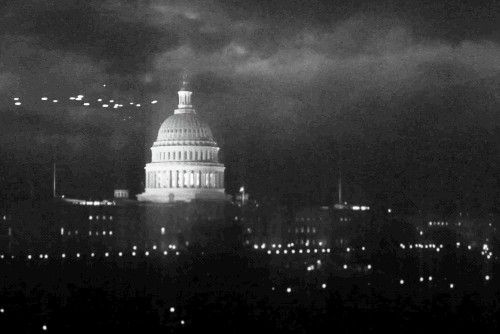





 mainly a cover for an ongoing multi-national endeavour to build a space shield, intended to protect mankind from a feared invasion by highly advanced organisations operating in outer space.
mainly a cover for an ongoing multi-national endeavour to build a space shield, intended to protect mankind from a feared invasion by highly advanced organisations operating in outer space.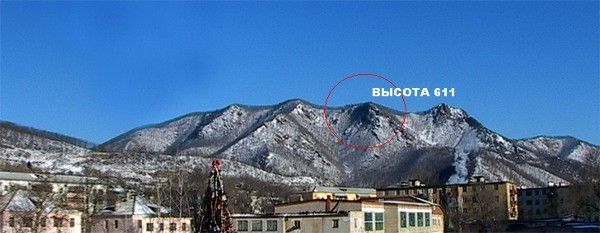
 That cold January day, a reddish sphere flew into the a small mining town from in the Far East of Russia the southeastern direction, crossing part of Dalnegorsk before crashing at the Izvestkovaya Mountain – also known as Height or Hill 611, because of its size.
That cold January day, a reddish sphere flew into the a small mining town from in the Far East of Russia the southeastern direction, crossing part of Dalnegorsk before crashing at the Izvestkovaya Mountain – also known as Height or Hill 611, because of its size.